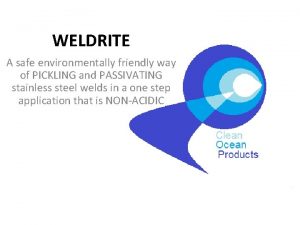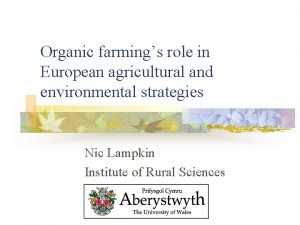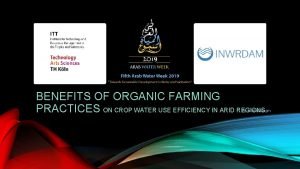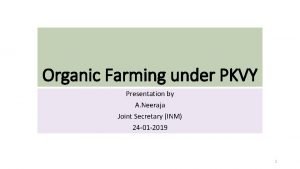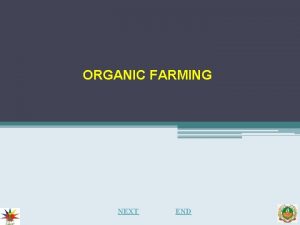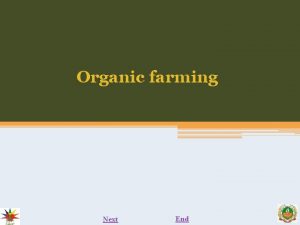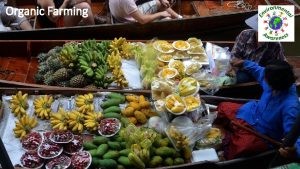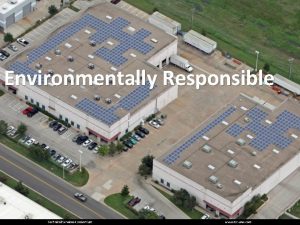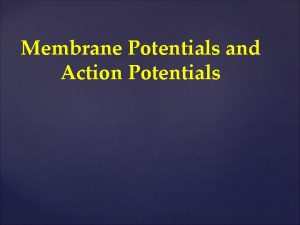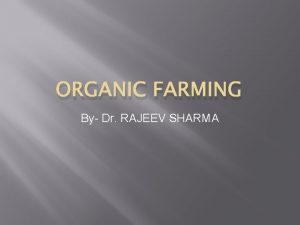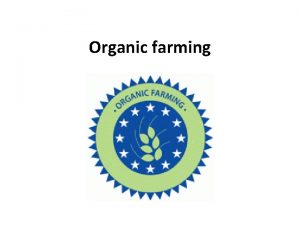Potentials for Organic Farming Environmentally friendly agriculture Efficient










- Slides: 10

Potentials for Organic Farming Environmentally friendly agriculture Efficient Sustainable Small-scale Wastewater Systems, p Eutrophication problems of the Baltic Sea – effects, causes, solutions Baltic Sea Parliamentary Conference Mariehamn, Aland Islands 14 -15 August 2006 Gunnar Norén CCB Executive secretary

WASTEWATER MANAGEMENT IN SMALL- AND MEDIUM-SIZED MUNICIPALITIES AND SINGLE FAMILY-HOMES Recent review - by the Country Water Partnerships of GWP CEE (Global Water Partnership Central and Eastern Europe)indicates that * small and dispersed communities (less then 2 000 p. e. ) are inhabited by 20 to 40 percent of the total population of the CEE countries, * which represents about 20 to 40 millions of inhabitants. * they constitute large but usually economically less successful segment of our societies.

People using wastewater treatment in years 1995 -2004

Studies made by municipalities in Sweden and Finland show that - 85 % of the total P-load come from rural areas in the municipality (Östhammar, Sweden) - 80 -90 % of all nutrient load come from single family-homes (in some coastal municipalities studied) - Swedish Commission on the Marine Environment concluded in 2003 Single family-homes(total 1 million have own treatment) contribute with 1/3 of the P-load 1/10 of the N-load from point sources along the Swedish coast Conclusion is: - Coordinated actions are needed to fight the Nutrient load from small settlements, as an important component to solve the Baltic eutrophication problem

Standards for many municipalities wastewater treatment (WWT) are not sufficient -Introduced conventional WWT (Biological treatment) - effective for organic matters and bacteria removal -Phosphorus (P) and nitrogen (N) removal is usually low -High standards for P- and N-removal needed, to reduce nutrient load and eutrophication -Combination of WWT techniques *Conventional – indoor systems *Natural – outdoor systems -Examples -Bioditches /bioponds/ wetlands -Irrigation of wastewater to soil-systems (energy-forest) (use the nutrient resource – instead of creating a pollution)


Sampling Well Sealed sand filter bed Septic tank Urine tank Figure. Schematic description of urine diverting system Figure. Example of a double-flushed urine diverting toilet. There are several different models available on the market.

New regulations for wastewater treatment in Finland In the beginning of 2004 new regulations for wastewater treatment for households outside the municipal sewer network were introduced in Finland. Single family-homes will have to fulfil same standards for wastewater treatment as for canalised municipal wastewater treatment plants. 90 % BOD reduction , of max 50 gram organic matter /day 85 % P-reduction , of max 2. 2 gram P /day 40 % N-reduction , of max 14 gram N /day All new houses from 2004, and Older houses from 2014 Average investment per house , 3000 – 5000 Euros

Requirements needed for municipal wastewater treatment: Small- and medium-sized municipalities and single family-homes - develop a new Actions/Recommendation on Requirements for high standards on Wastewater management for small-and medium-sized municipalities in Baltic catchment (Less then 2000 p. e. ) (between 2000 – 10 000 p. e. ) (sensitive areas close to coastal zones and rivers) Stronger demands than EC Urban Wastewater Directive needed for Baltic region (high P-removal) - develop new Actions/Recommendations for wastewater standards for single family-homes (High standards-see Finland) Some Swedish municipalities require 50 % recycling of nutrients in single family-homes outside wastewater collecting system (support new techniques)

Other important Requirements for phosphorus removal - develop Action/Recommendation to phase-out all detergents and washing powder with phosphorus content, within 3 -5 years -of special importance for households connected to Municipal WWT , with low phosphorus removal (no Chemical treatment) -Can be the most cost-effective measure, in such areas
 Environmentally friendly pickling
Environmentally friendly pickling Productively efficient vs allocatively efficient
Productively efficient vs allocatively efficient Productively efficient vs allocatively efficient
Productively efficient vs allocatively efficient Productively efficient vs allocatively efficient
Productively efficient vs allocatively efficient Allocative efficiency vs productive efficiency
Allocative efficiency vs productive efficiency Productively efficient vs allocatively efficient
Productively efficient vs allocatively efficient Objectives of organic farming
Objectives of organic farming Principles of organic farming
Principles of organic farming Advantages of organic farming
Advantages of organic farming Organic farming conclusion
Organic farming conclusion Organic farming
Organic farming
